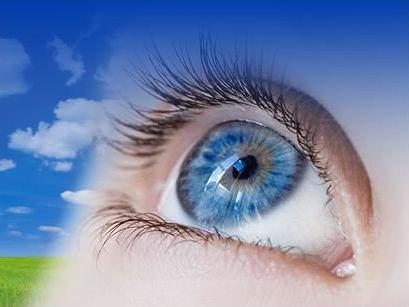


Though smaller than most organs of the body, the eye is an incredibly complex structure. It is made up of 40 subsystems that all must work together so a person can see. Just like a camera, which receives, focuses, and transmits light through a lens to create a picture, images are created by the eye on the retina. The light signals that the retina receives are sent to the brain through optic nerves. However, when the retina or another part of the eye becomes damaged, the eyes cannot send signals to the brain, which means that vision becomes impaired
Visual impairment is very common. It is estimated that about 10 million Americans suffer from visual impairment. Some cannot see far away objects clearly (called near-sightedness or “myopia”) while others see far away objects clearly but cannot focus on nearby objects (called far-sightedness or “hyperopia ” or “presbyopia”). These issues can usually be easily treated with corrective lenses such as glasses or contact lenses. But when part of the eyes or brain that processes images is damaged, it can result in severe or complete loss of vision. Vision loss can happen suddenly or it can be a gradual process, and often the loss is irreversible. Vision loss is categorized as either complete vision loss (blindness) or partial vision loss (limited vision).
Causes of Vision Loss
Anything that prevents light passing from the environment to the retina, or from the retina to the brain, results in visual impairment. Vision impairment and loss can occur for many reasons. Some people are born with impaired vision, which may be inherited or caused by infection that passes from the mother to the developing fetus. Sometimes the eye is misshapen or is injured. The leading causes of vision loss are:
• Age-related vision loss
• Accident or injury
• Glaucoma (damaged optic nerve)
• Macular degeneration (gradual loss of sharp, central vision)
• Cataracts
• Diabetes (causes blocked, blurry, or shadowy vision and impaired night vision)
• Blocked blood vessels
• Corneal damage from vitamin A deficiency
• Side-effects of surgery
• Amblyopia (loss of ability to see details)
• Inflamed optic nerve
• Stroke
• Retinitis pigmentosa (damaged retina)
• Tumors (retinoblastoma and optic glioma)
• Trachoma (inflammation due to Chlamydia trachomatis)
• Fatigue
• Over-exposure of the eyes outdoors
• Medication
Symptoms
Symptoms that signal a person is suffering from vision loss are:
• Blurred, cloudy, or fuzzy vision
• Difficulty focusing on close objects
• Dark spots in the center of vision
• Double vision or ghost vision
• Difficulty adjusting from light to dark and vice versa
• Poor night vision
• Halos around objects
• Sensitivity to light which causes blinking, tearing, and squinting
• Fading colors
• Tiny floaters across the eyes (retinal detachment)
• Pain when the eyes move or are touched
• Flashes of light
• Shady vision or sensation of curtain hanging on one side of the image
Diagnosis & Treatment
Sudden or gradual vision loss is an emergency condition and should be dealt with immediately. Though most serious vision problems are painless, ignoring these problems can result in permanent vision loss.
Although your primary care physician can diagnose and treat many eye problems, they may refer you to an ophthalmologist (a physician who specializes in eye disorders). The ophthalmologist can perform a more detailed examination, checking eye movement, pupil, iris, pain in the eye, the back of the eye, and eye pressure. He or she may perform a few tests like:
• Slit-Lamp Examination: A thin beam of light is focused into the eye to examine eyelids, sclera, conjunctivitis, iris, lens, and cornea.
• Refraction Test: Checks the extent of visual impairment and measures a person's prescription for eyeglasses.
• Visual Acuity Test: Reading a chart at various distances.
• Visual Field Test: Measures peripheral vision.
• Tonometry: Measures fluid pressure inside the eyes to evaluate for glaucoma.
Again, if you experience any significant changes in vision and/or acute pain in your eye(s), you should seek immediate medical evaluation.
Treatment
Many treatment options are available if the doctor determines that a person's eye problems will lead to visual impairment or loss. These options include wearing corrective lenses, using eye-drops or oral medicines, and surgery for cataracts and retinopathy (damage to the retina). Sometimes, treatment for partial vision loss involves implementing visual aids to cope, like special glasses and large print books. For complete vision loss, Braille, a guide dog, and text-reading software is available to help a person adjust to life without sight.
Prevention
To prevent vision loss, regular eye check-ups by an optometrist or ophthalmologist are recommended, once a year if the patient is older than 65. Someone with diabetes should get frequent eye check ups since the disease contributes to cataracts, glaucoma, and retinopathy (damage to the retina, which receives and transmits visual stimulation to the brain).
Other ways to prevent vision loss is to protect the eyes by wearing sunglasses that are certified to block UV radiation. Safety goggles should always be worn while skiing, working with power tools, and participating in sports. Eat foods that are rich in antioxidants, like green, leafy vegetables, as well as vitamin A and zinc, since these prevent vision loss and age-related macular degeneration. Studies have shown that smokers are seven times more likely to experience vision loss than non-smokers, so it is highly advised to stop smoking.
Conclusion
The loss of vision can dramatically change a person's life. While much visual impairment can be treated, some vision loss cannot be restored completely even after treatment. Early detection and treatment is vital – in fact, vision loss is preventable in 95 percent of diabetic-related eye diseases with early detection and treatment. Do not leave your vision up to chance. See an eye doctor soon.